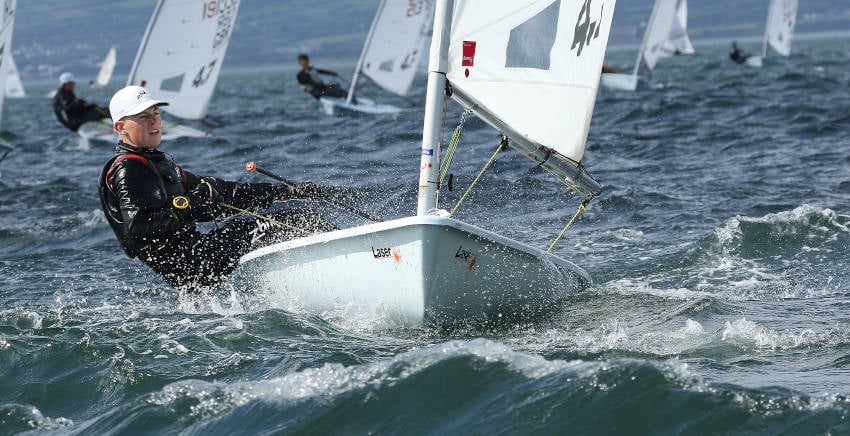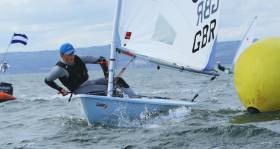Displaying items by tag: Irish Laser Nationals
The final day has arrived for the Irish Laser Nationals at Ballyholme Yacht Club on Belfast Lough.
After six of 11 scheduled races were completed on Day 2 yesterday (Saturday 24 August), sailors awoke to sunny skies but little wind and forecasts for today range from 5 to 12 knots, gusting 16.
After nine fairly tough races (see results HERE), some will be grateful for a bit of respite although many have polished up their breezy sailing skills in the last three days and wanting one last blast if possible.
Yesterday morning saw the strongest winds of the event for Race 1 although not as unsteady as Day 1 or as gusting and less breakages to masts, etc as a result.
The second race was similar if a little more controllable with great blast reaches between the beats and runs. Legs in the standard fleet at least were starting to get painful after 24 beats in the championship so far.
The final race started in decent wind as well for the standards and 4.7s who both got away first time as soon as the Radials had cleared the inner loop.
The breeze finally relented on the first run a little and then on the second run shifted 50 degrees to the east without warning but by then both fleets were settled and relatively happy for the fetch and reach/run to the finish.

As they were heading for home the Radial fleet finally got away for their final race with the Race Management team having had to shift the course to accommodate the new wind direction.
In the Laser Standards, Ronan Wallace of Wexford Boat Club continued his great form with two bullets in Races 7 and 8 although he wasn’t always at the front of the fleet until the latter stages of both races.
In Race 9, Darragh O’Sullivan managed to get in front and spoil the perfect score. Fionn Conway was always close as well with Master Nick Walsh and Conor Simms both trying to get in on the action but getting passed by the finish line.
The 4.7 fleet saw England’s Luke Anstey make a move with two firsts and a second to move equal on points with Royal Cork’s Michael Crosbie with the National’s Conor Gorman just one point behind. Michael and Conor both have three firsts so it’s very much up to what happens today to see who will win.
First girl remains Ellen Barbour from County Antrim Yacht Club with consistent results in the breeze let down a little by the final race.
Ballyholme’s Dan McGaughey had a much better third day in the Radial fleet, winning the day with 2,1,7 but his poor Friday keeps him in fourth place. Michael O’Suilleabhan won the final race to squeeze in front by one point from Kai Wolgram from Llyn Brenig with Tom Higgins in third place. Clare Gorman is first lady.
Two more races are scheduled today but with an AP up, the fleet may be lucky to squeeze in one race before the wrap-up and prize-giving.





























































